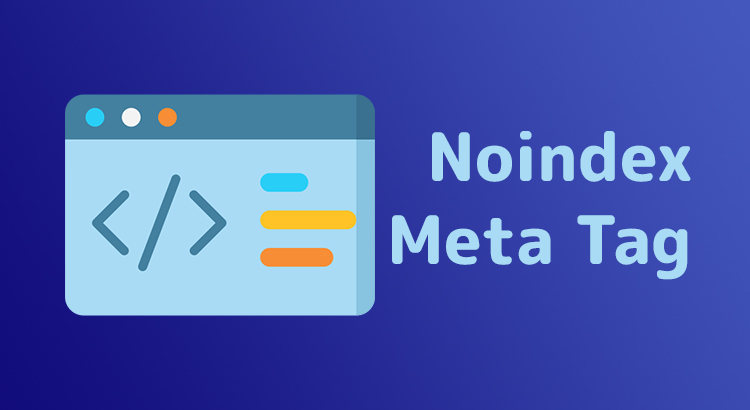Not all web pages are meant for public consumption, and this is where the “noindex” meta tag comes into play. This article delves into the aspects of the noindex tag, exploring its purpose, implementation, and its profound implications on SEO.
Related Article: The Importance of Meta Tags in SEO
What Is Noindex Tag?
The “noindex” meta tag is a directive embedded within the HTML of a webpage. Its primary function is to communicate to search engine crawlers that while the page can be accessed and crawled, it should not be indexed or included in the search engine’s database.
Essentially, it’s like telling a librarian not to add a certain book to the library’s catalog.
How Does Noindex Affect SEO?
The implications of noindex tag in search engine optimization:
1. Exclusion from Search Results
Noindex directs search engines to exclude a page from search results. It’s vital for pages you don’t want publicly visible, like private content or pages under development, preventing them from impacting your site’s SEO or user experience.
2. Avoiding Duplicate Content
Noindex is crucial for mitigating penalties due to duplicate content. It prevents syndicated or printer-friendly versions of pages from being indexed separately, maintaining your site’s SEO integrity.
Useful Article: How Can Content Freshness Impact Your Search Engine Rankings?
3. Preserving Crawl Budget
Using noindex on low-value pages conserves crawl budget for more important ones, ensuring search engine bots prioritize crawling valuable content promptly, enhancing overall SEO performance.
4. Maintaining Site Quality in SERPs
Noindex helps maintain site quality by excluding thin or low-value pages from search results, ensuring that only pages providing unique value rank prominently, bolstering your site’s reputation in SERPs.
5. Temporary vs. Permanent Removal
Noindex allows for temporary removal of pages from search results, offering flexibility in managing your site’s content visibility. However, for permanent removal, more drastic measures like page deletion are necessary.
6. Conflicts with Canonical Tags
Combining noindex with canonical tags can confuse search engines, potentially affecting the intended indexing and ranking of pages. It’s advisable to avoid using both on the same page to ensure clear signals to search engines.
7. Potential for Misuse
Misapplying the noindex tag can lead to unintended consequences, causing important pages or sections of a site to disappear from search results. Vigilance and understanding of its implications are crucial to prevent detrimental effects on SEO.
8. Does Not Prevent Crawling
Noindex solely prevents indexing but doesn’t stop search engines from crawling the page. To prevent both indexing and crawling, additional measures like using nofollow tags or disallowing in robots.txt are necessary.
How to Noindex a Page?
To noindex a page, insert a “noindex” meta tag within the HTML head section. The tag informs search engines not to include the page in search results. Ensure the page isn’t blocked in robots.txt and that crawlers can access it. Use this code:
<meta name=”robots” content=”noindex”>
For specific crawlers, replace “robots” with the crawler’s name like “Googlebot” or “bingbot”.
Best Practices for Using “noindex”
When implementing the “noindex” tag, follow these best practices:
1. Check Robots.txt
Ensure the page isn’t disallowed in robots.txt, as disallowed pages can still be indexed. Pages must be accessible for crawlers to read the “noindex” directive effectively.
2. Consider Long-Term Impact
Long-term use of “noindex” can lead to link equity loss. Pages with “noindex” may eventually cease passing link equity, similar to “nofollow” links. Understand that this transition depends on various factors.
3. Use Canonical Tags for Duplicate Content
Avoid using “noindex” for duplicate content. Instead, utilize canonical tags to consolidate duplicate pages.
Canonicalization guides search engines to index the main version while consolidating link signals from non-canonical versions, boosting the main page’s ranking.
4. Regular Monitoring
Continuously monitor your website for SEO issues, including accidental “noindex” usage. Vigilance helps prevent traffic losses stemming from indexability issues, such as unintentionally “noindexed” pages or sections.
Final Thoughts on Noindex Meta Tag
The noindex meta tag serves as a powerful tool for controlling the visibility of web pages. However, it’s crucial to use this tool with care, understanding its nuances and potential implications for long-term search visibility and site performance.


